Study of the Intelligent Behavior of a Maximum Photovoltaic Energy Tracking Fuzzy Controller
Abstract
1. Introduction
2. Motivation
3. Challenges in Exploiting the Maximum Energy from the Photovoltaic System
4. The Fuzzy Logic MPPT-Based Controller
4.1. Methodology
- (1)
- The analysis of the slope m(pi) at the pi point on the P-V characteristic (Figure 5) is used to locate the actual operation point pi. According to this data, the controller will decide whether to increase or decrease the voltage by varying the duty ratio D.
- (2)
- Analysis of the rate of change of the slope at the pi point Δm(pi) = s(pi) expresses the rate of the approach and distancing of the MPP. This parameter is also included in the controller for faster MPP searching.
4.2. The Configuration of the Fuzzy Controller
4.2.1. Fuzzification
- (1)
- Input1: N: Negative, Z: Zero, P: Positive,
- (2)
- Input2: N: Negative, Z: Zero, P: Positive,
- (3)
- Output: D: Decrease, S: Stabilize, I: Increase.
- Input1 values are between −0.1 and 0.1;
- Input2 values are between −100 and 100;
- Output values are between −0.1 and 0.1.
4.2.2. The Inference Method
4.2.3. Defuzzification
5. Extract of the MPP Using the Perturb and Observe (P&O) and Fuzzy Methods
6. Simulations & Discussions
- (1)
- The number of PV modules connected in series is 14;
- (2)
- the number of photovoltaic cells in each PV module, connected in series z = 36;
- (3)
- Rp = 30 Ω, Rs = 15 × 10−3 Ω, Eg = 1.1 eV, n1 = 1, n2 = 2, k = 1.380 × 10−23 J/K
- (4)
- q = 1.602 × 10−19 C;
- (5)
- (6)
- the initial value of duty ratio was 0.1.
6.1. Simulation Results for Fixed Climatic Conditions
6.2. Simulation Results for the Changing Climatic Conditions
6.2.1. Simulation Results for a Fixed Temperature at 25 °C and Fast Increase of Irradiance from 500 Wm−2 to 1100 Wm−2
6.2.2. Simulation Results for a Fixed Temperature at 25 °C and Slow Increase of Irradiance from 500 Wm−2 to 650 Wm−2
6.2.3. Simulation Results for Fixed Irradiance at 1000 Wm−2 and Fast Temperature Decrease from 40 °C to 10 °C.
6.2.4. Simulation Results for Fixed Irradiance at 1000 Wm−2 and Slow Temperature Increase from 25 °C to 30 °C
7. Conclusions
Author Contributions
Funding
Conflicts of Interest
Abbreviations
| PV | Photovoltaic |
| MPPT | Maximum power point tracking |
| MPP | Maximum Power Point |
| P&O | Perturb and observe |
| MOSFET | Metal Oxide Semiconductor Field Effect Transistor frequency |
| D | Duty cycle |
| ISC | Short circuit current |
| VOC | Open circuit voltage |
| q | Electron charge |
| k | Boltzman’s constant |
| Eg | band-gap energy of the semiconductor |
| V | Input voltage |
| I | Output current |
| IRS | Reverse saturation current |
| IS | Saturation current |
| PWM | Pulse width modulation |
| S | Irradiation |
| T | Temperature |
| P-V | photovoltaic characteristic P(V) |
| I-V | photovoltaic characteristic I(V) |
| z | number of photovoltaic cells connected in series |
| Rs | the series resistance of photovoltaic cells |
| Rp | parallel resistance of photovoltaic cells |
References
- Cheikh, M.A.; Larbes, C.; Kebir, G.T.; Zerguerras, A. Maximum power point tracking using a fuzzy logic control scheme. Rev. Des Energ. Renouv. 2007, 10, 387–395. [Google Scholar]
- Khaligh, A.; Onar, O.C. Energy Harvesting: Solar, Wind, and Ocean Energy Conversion Systems; CRC Press: Boca Raton, FL, USA, 2017. [Google Scholar]
- Takun, P.; Kaitwanidvilai, S.; Jettanasen, C. Maximum Power Point Tracking Using Fuzzy Logic Control for Photovoltaic Systems. In Proceedings of the International Multiconference of Engineers and Computer Scientists, Hong Kong, China, 16–18 March 2011. [Google Scholar]
- Pandey, S.; Jena, P.K. A Review on Maximum Power Point Tracking Techniques for Photovoltaic Systems. Int. Res. J. Eng. Technol. 2017, 4, 1715–1720. [Google Scholar]
- Rai, A.; Awasthi, B.; Singh, S.; Dwivedi, C.K. A Review of Maximum Power Point Tracking Techniques for Photovoltaic System. Int. J. Eng. Res. 2016, 5, 539–545. [Google Scholar]
- Esram, T.; Chapman, P.L. Comparison of Photovoltaic Array Maximum Power Point Tracking Techniques. IEEE Trans. Energy Convers. 2007, 22, 439–449. [Google Scholar] [CrossRef]
- Hua, C.; Shen, C. Comparative study of peak power tracking techniques for solar storage system. In Proceedings of the APEC′98 Thirteenth Annual Applied Power Electronics Conference and Exposition, Anaheim, CA, USA, 15–19 February 1998. [Google Scholar]
- Subudhi, B.; Pradhan, R. A comparative study on maximum power point tracking techniques for photovoltaic power systems. IEEE Trans. Sustain. energy 2013, 4, 89–98. [Google Scholar] [CrossRef]
- Onat, N. Recent Developments in Maximum Power Point Tracking Technologies for Photovoltaic Systems. Int. J. Photoenergy 2010, 2010, 245316. [Google Scholar] [CrossRef]
- Oulcaid, M.; El Fadil, H.; Yahya, A.; Giri, F. Maximum Power Point Tracking Algorithm for Photovoltaic Systems under Partial Shaded Conditions. IFAC-PapersOnLine 2016, 49, 217–222. [Google Scholar] [CrossRef]
- Khalifa, M.A.; Saied, K.M.; Bitro, S.S.; Anwar, M.; Nizam, M. PV Power System Using Maximum Power Point Tracking (Increment Conductance Algorithm). Int. J. Innov. Res. Sci. Eng. Technol. 2014, 3, 12267–12275. [Google Scholar]
- Kamarzaman, N.A.; Tan, C.W. A comprehensive review of maximum power point tracking algorithms for photovoltaic systems. Renew. Sustain. Energy Rev. 2014, 37, 585–598. [Google Scholar] [CrossRef]
- Garg, V.K. A review paper on various types of MPPT techniques for PV system. Int. J. Innov. Eng. Res. Technol. 2014, 4, 320–330. [Google Scholar]
- Allataifeh, A.A.; Bataineh, K.; Al-Khedher, M. Maximum Power Point Tracking Using Fuzzy Logic Controller under Partial Conditions. Smart Grid Renew. Energy 2015, 6, 1–13. [Google Scholar] [CrossRef]
- Gheibi, A.; Mohammadi, S.M.A. Maximum Power Point Tracking of Photovoltaic Generation Based on the Type 2 Fuzzy Logic Control Method. Energy Procedia 2011, 12, 538–546. [Google Scholar] [CrossRef]
- El Khateb, A.H.; Rahim, N.A.; Selvaraj, J. Type-2 Fuzzy Logic Approach of a Maximum Power Point Tracking Employing SEPIC Converter for Photovoltaic System. J. Clean Energy Technol. 2013, 1. [Google Scholar] [CrossRef]
- Luo, F.L.; Hong, Y. Renewable energy systems: advanced conversion technologies and applications; CRC Press: Boca Raton, FL, USA, 2016. [Google Scholar]
- Cheng, P.C.; Peng, B.R.; Liu, Y.H.; Cheng, Y.S.; Huang, J.W. Optimization of a Fuzzy-Logic-Control-Based MPPT Algorithm Using the Particle Swarm Optimization Technique. Energies 2015, 8, 5338–5360. [Google Scholar] [CrossRef]
- Larbes, C.; Cheikh, S.M.A.; Obeidi, T.; Zerguerras, A. Genetic algorithms optimized fuzzy logic control for the maximum power point tracking in photovoltaic system. Renew. Energy 2009, 34, 2093–2100. [Google Scholar] [CrossRef]
- Mahdavi, M.; Li, L.; Zhu, J.; Mekhilef, S. An Adaptive Neuro-Fuzzy Controller for Maximum Power Point Tracking of Photovoltaic Systems. In Proceedings of the TENCON 2015—2015 IEEE Region 10 Conference, Macao, China, 1–4 November 2015. [Google Scholar]
- Reisia, A.R.; Moradi, M.H.; Jamasb, S. Classification and comparison of maximum power point tracking techniques for photovoltaic system: A review. Renew. Sustain. Energy Rev. 2013, 19, 433–443. [Google Scholar] [CrossRef]
- Kumar, J.; Bahrani, P. Comprehensive Review on maximum power point tracking methods for SPV system. Int. Res. J. Eng. Technol. 2017, 4, 1634–1639. [Google Scholar]
- Abbes, H.; Abid, H.; Loukil, K.; Toumi, A.; Abid, M. Etude comparative de cinq algorithmes de commande MPPT pour un système photovoltaïque. Revue des Energ. Renouv. 2014, 17, 435–445. [Google Scholar]
- Ezinwanne, O.; Fu, Z.; Li, Z. Energy performance and cost comparison of MPPT techniques for photovoltaics and other applications. Energy Procedia 2017, 107, 297–303. [Google Scholar] [CrossRef]
- Knopf, H. Analysis, Simulation, and Evaluation of Maximum Power Point Tracking (MPPT) Methods for a Solar Powered Vehicle. Computer-Produced Typeface. Master’s Thesis, Portland State University, Portland, OR, USA, 1999. [Google Scholar]
- Farahat, M.A.; Metwally, H.M.B.; Mohamed, A.A.E. Optimal choice and design of different topologies of DC-DC converter used in PV systems, at different climatic conditions in Egypt. Renew. Energy 2012, 43, 393–402. [Google Scholar] [CrossRef]
- Allouache, H.; Zegaoui, A.; Boutoubat, M.; Bokhtache, A.A.; Kessaissia, F.Z.; Charles, J.P.; Aillerie, M. Distributed photovoltaic architecture powering a DC bus: Impact of duty cycle and load variations on the efficiency of the generator. AIP Conf. Proc. 2018, 1968. [Google Scholar] [CrossRef]
- Jafari, R.; Yu, W. Fuzzy Modeling for Uncertainty Nonlinear Systems with Fuzzy Equations. Math. Probl. Eng. 2017, 2017, 8594738. [Google Scholar] [CrossRef]
- Jose, P.; Jose, P.R. Grid Connected Photovoltaic System with Fuzzy Logic Control Based MPPT. Int. J. Eng. Innov. Technol. 2014, 3, 142–148. [Google Scholar]
- Algazar, M.M.; El-Halim, H.A.; Salem, M.E.E.K. Maximum power point tracking using fuzzy logic control. Int. J. Electr. Power Energy Syst. 2012, 39, 21–28. [Google Scholar] [CrossRef]
- Bühler, H. Réglage par Logique Floue; Presses Polytechniques et Universitaires Romandes: Lausanne, Switzerland, 1994. [Google Scholar]
- Patcharaprakiti, N.; Premrudeepreechacharn, S.; Sriuthaisiriwong, Y. Maximum power point tracking using adaptive fuzzy logic control for grid-connected photovoltaic system. Renew. Energy 2005, 30, 1771–1788. [Google Scholar] [CrossRef]
- Won, C.Y.; Kim, D.H.; Kim, S.C.; Kim, W.S.; Kim, H.S. A new maximum power point tracker of photovoltaic arrays using fuzzy controller. In Proceedings of the 1994 Power Electronics Specialist Conference, Taipei, Taiwan, 20–25 June 1994. [Google Scholar]
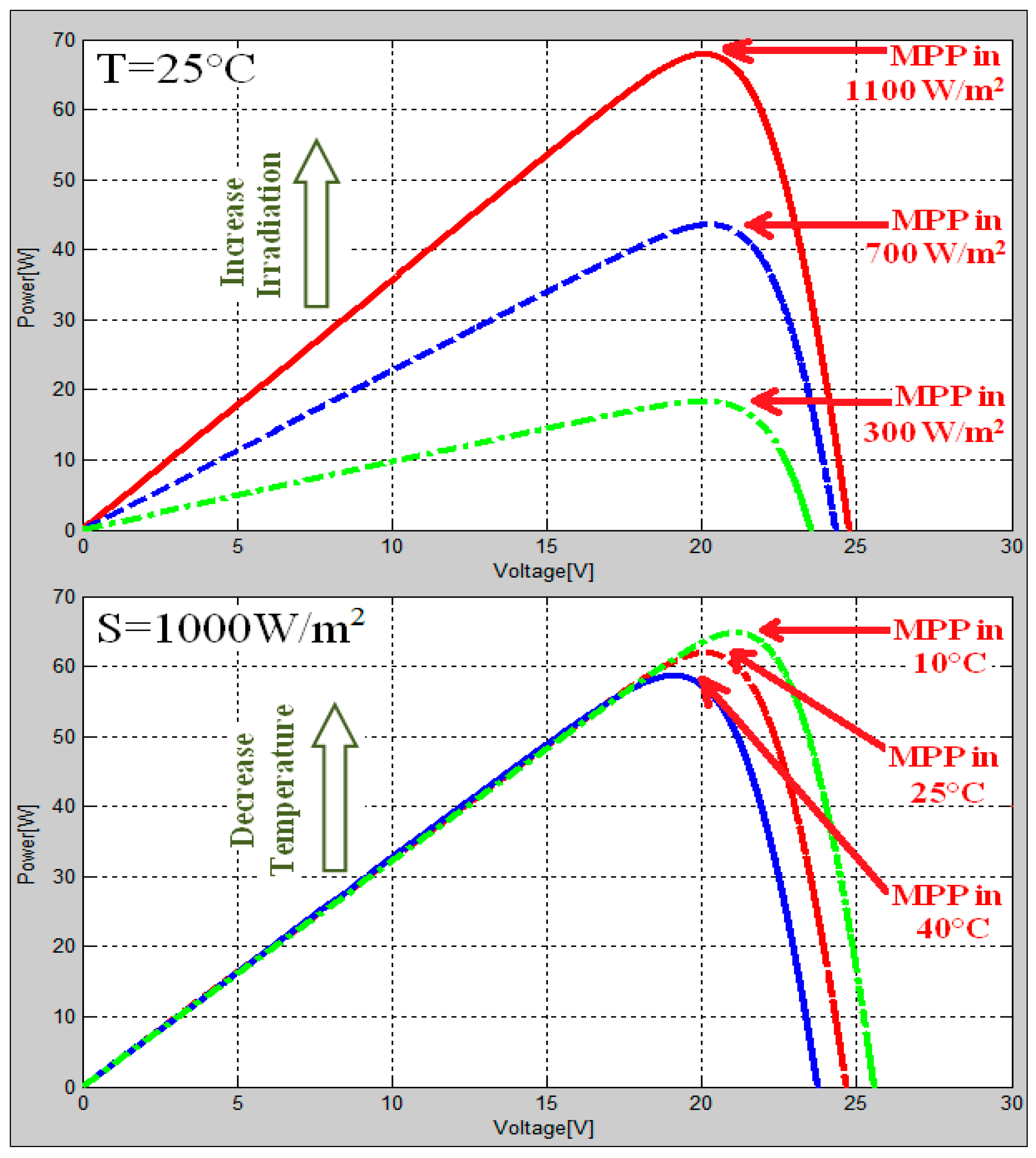

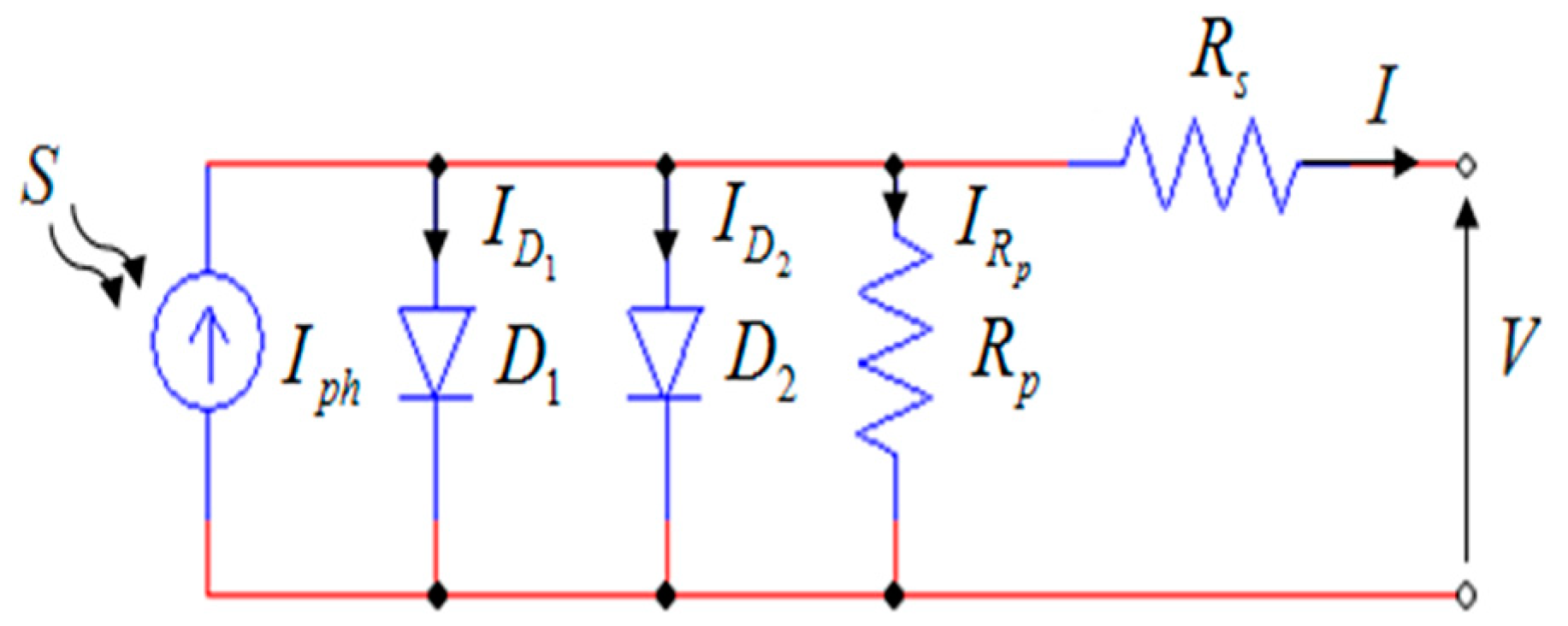
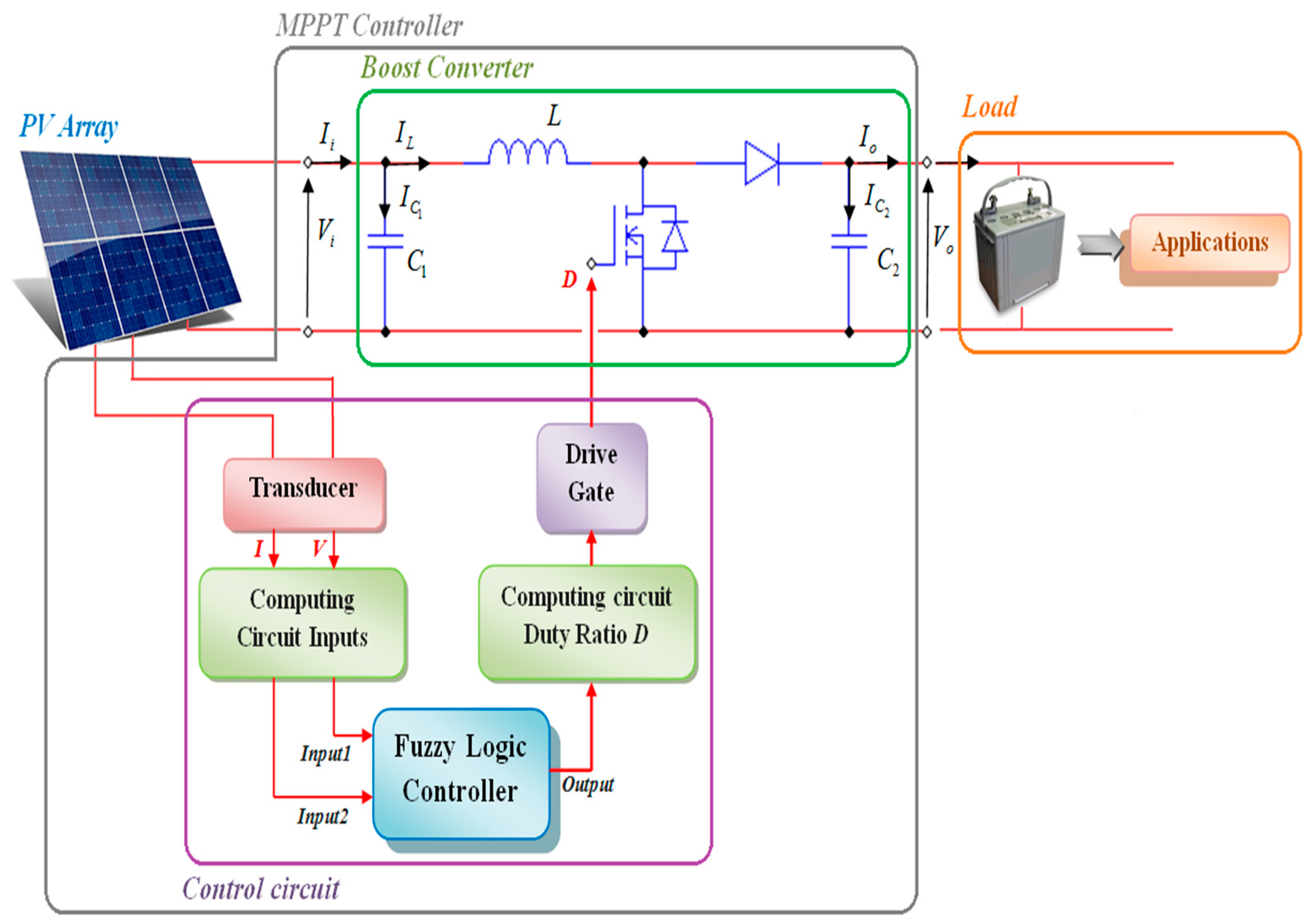

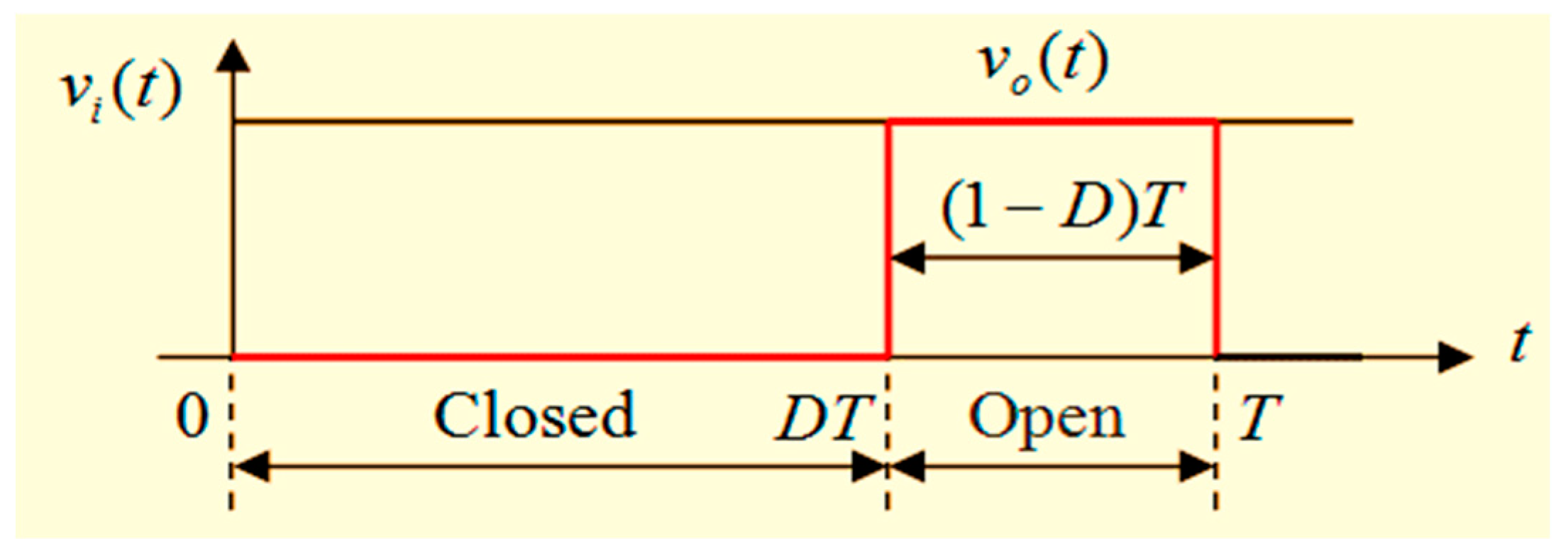

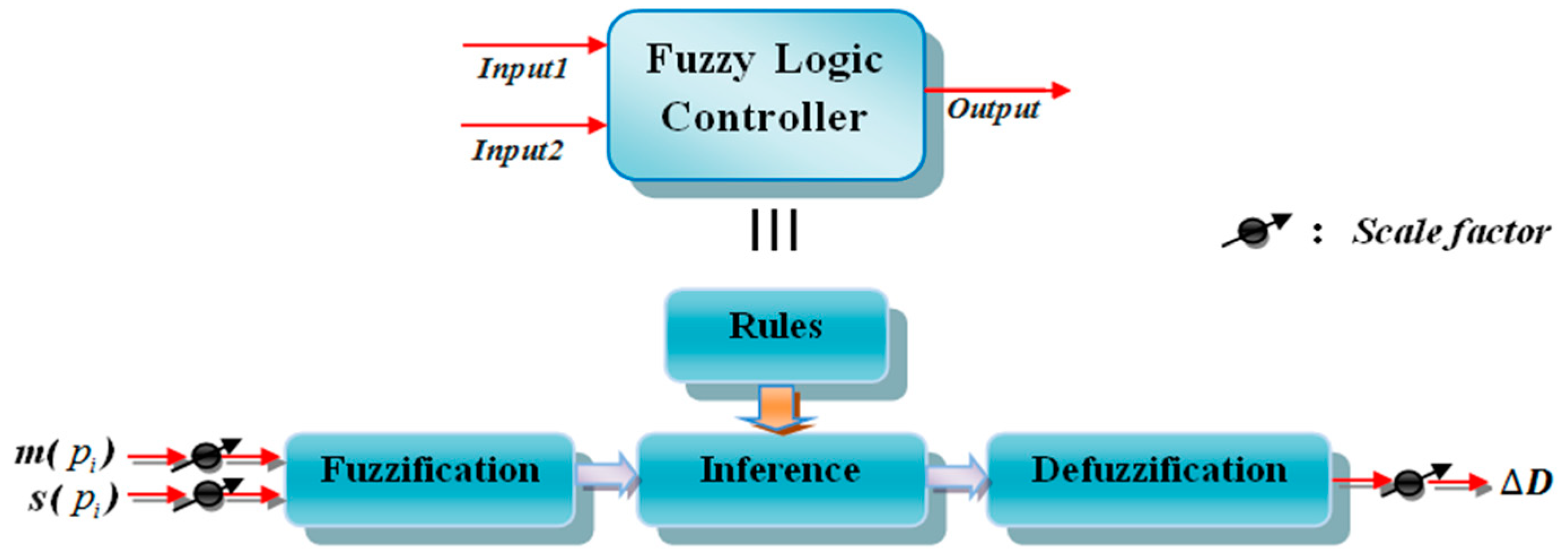
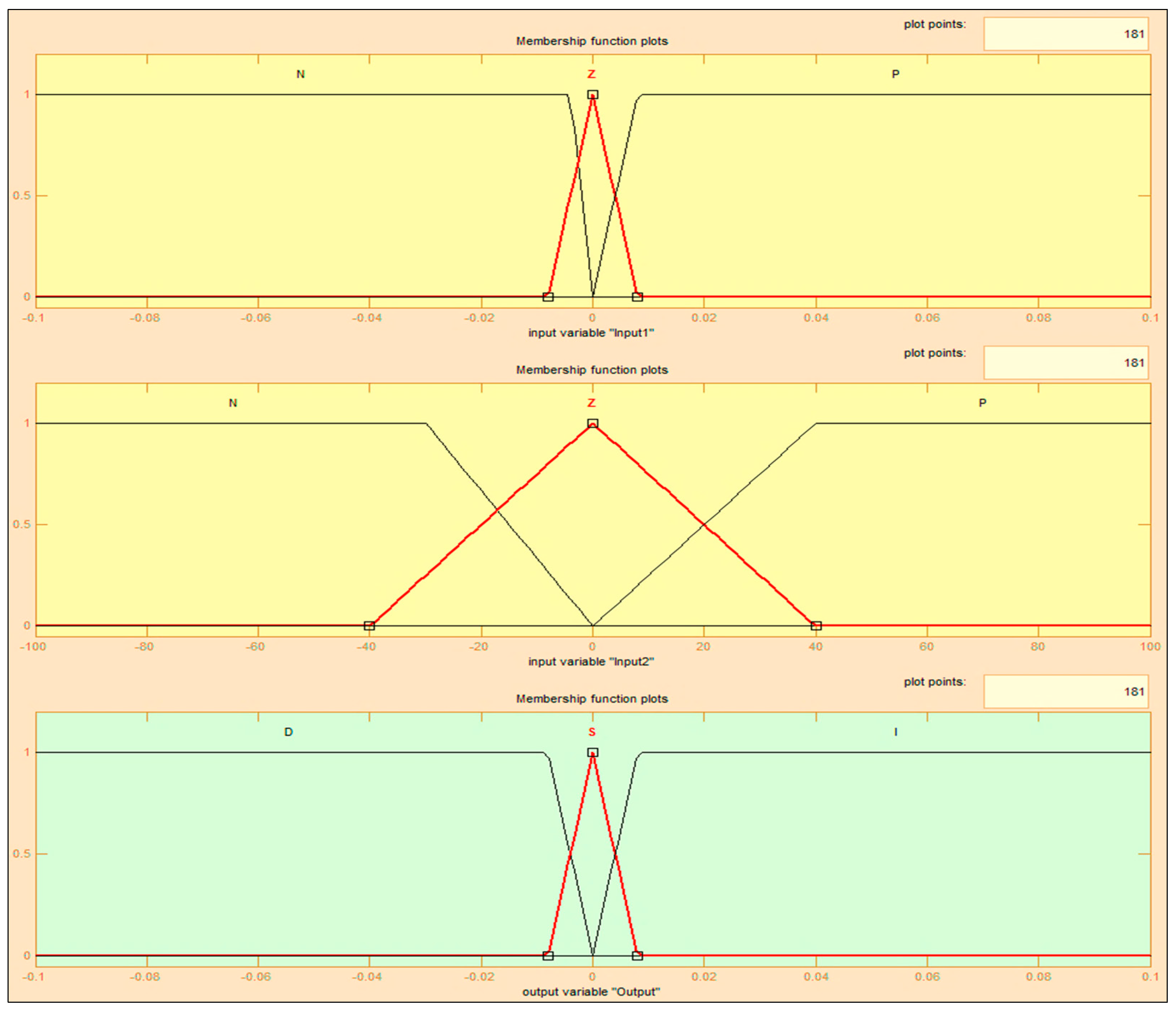
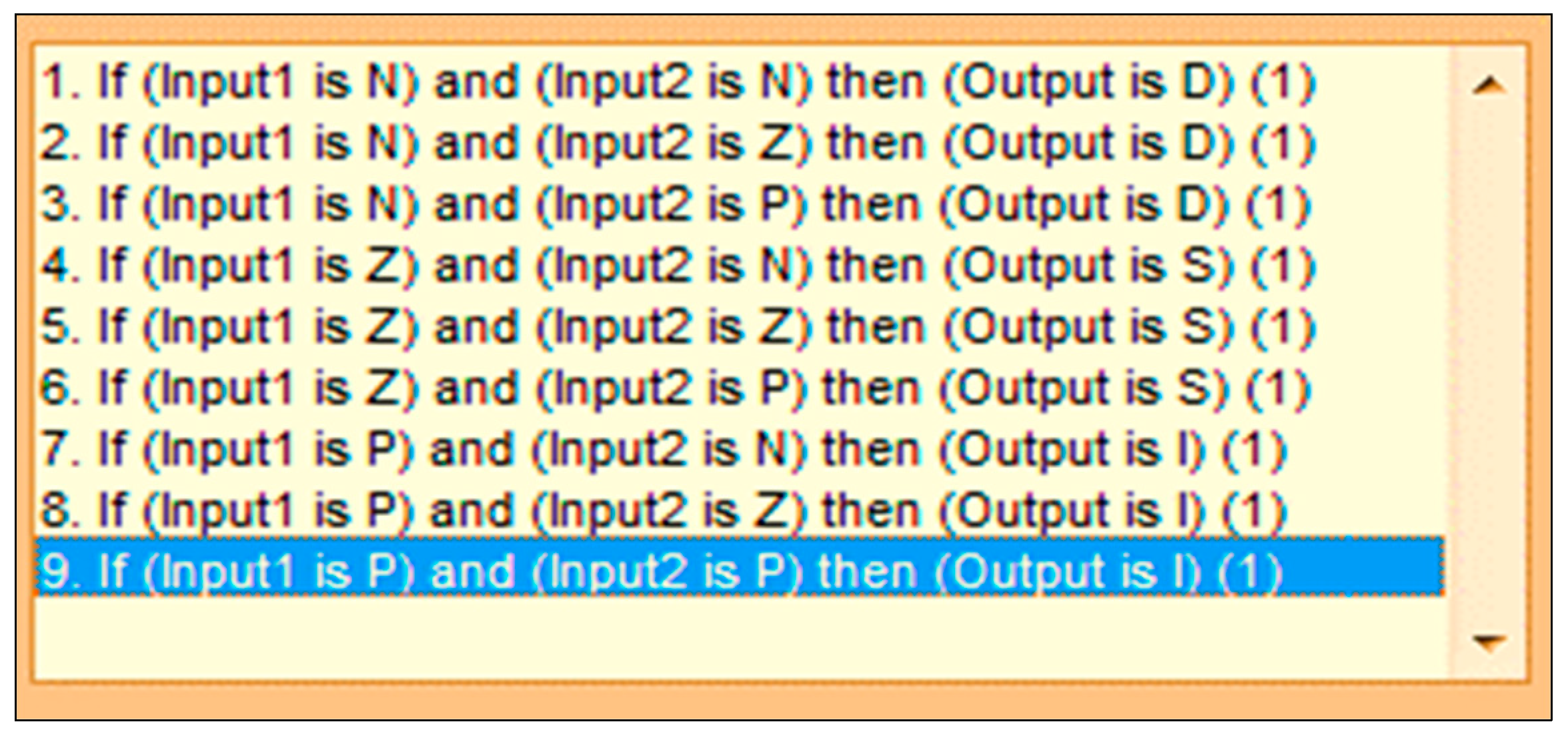
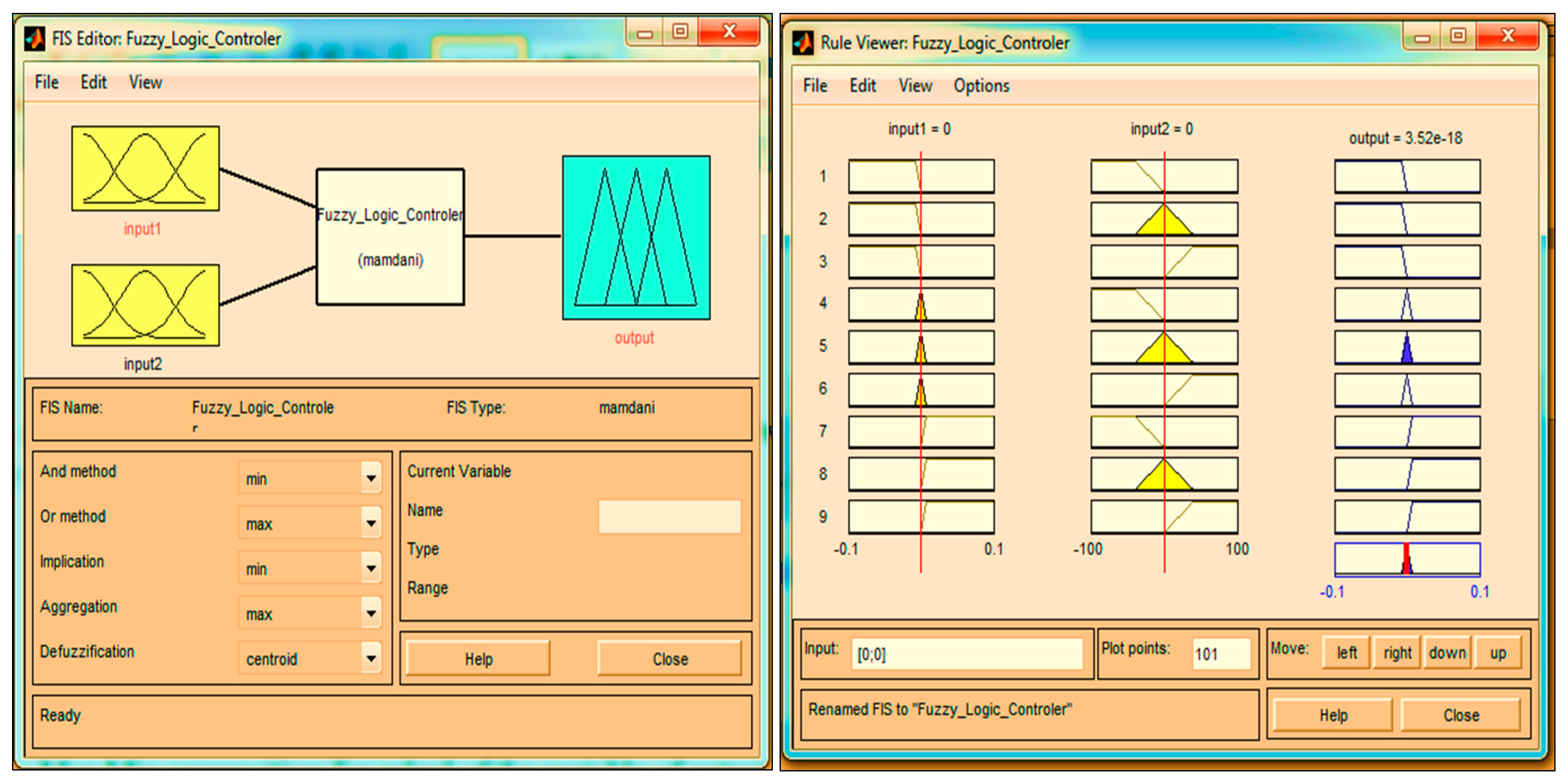
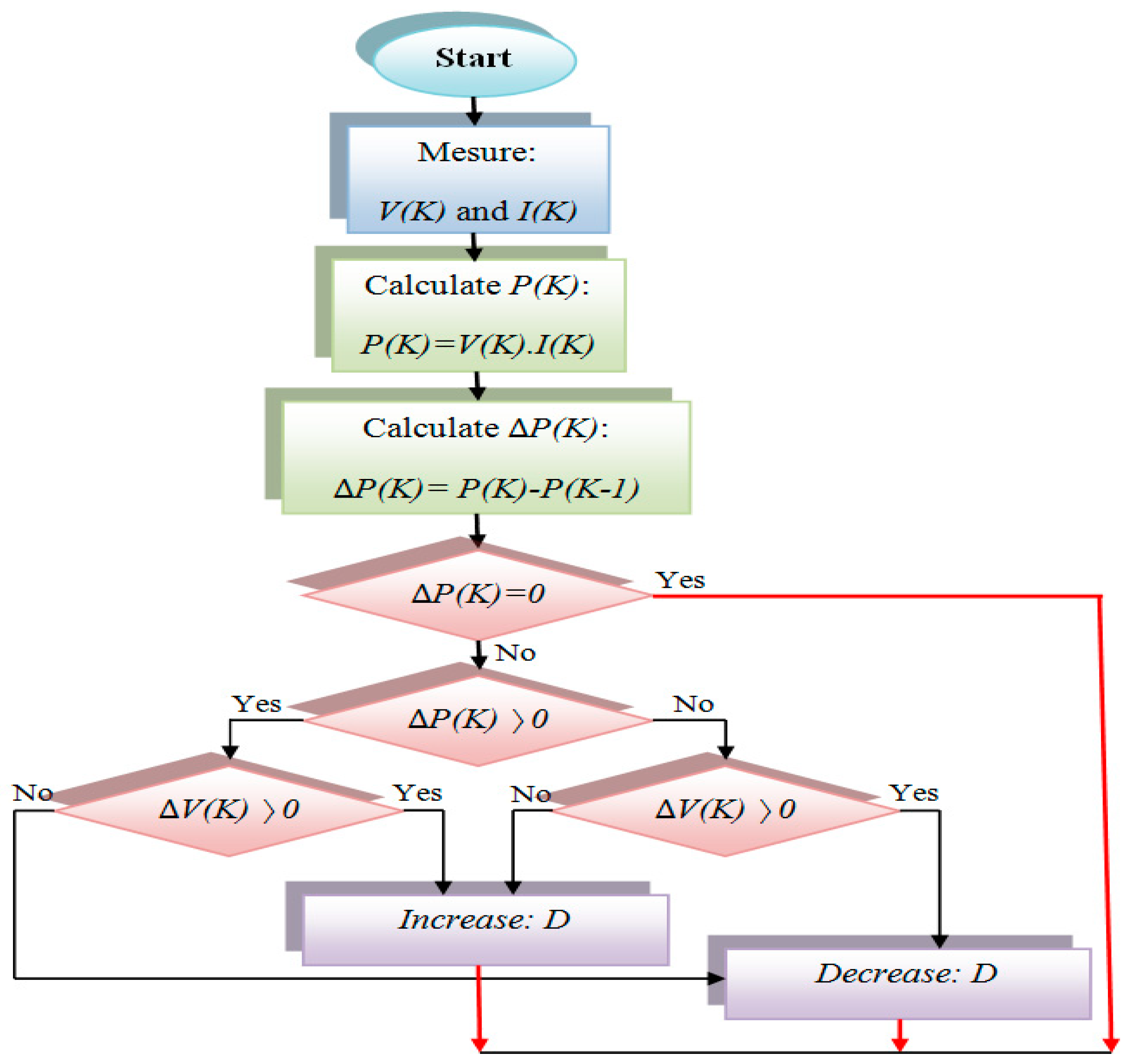



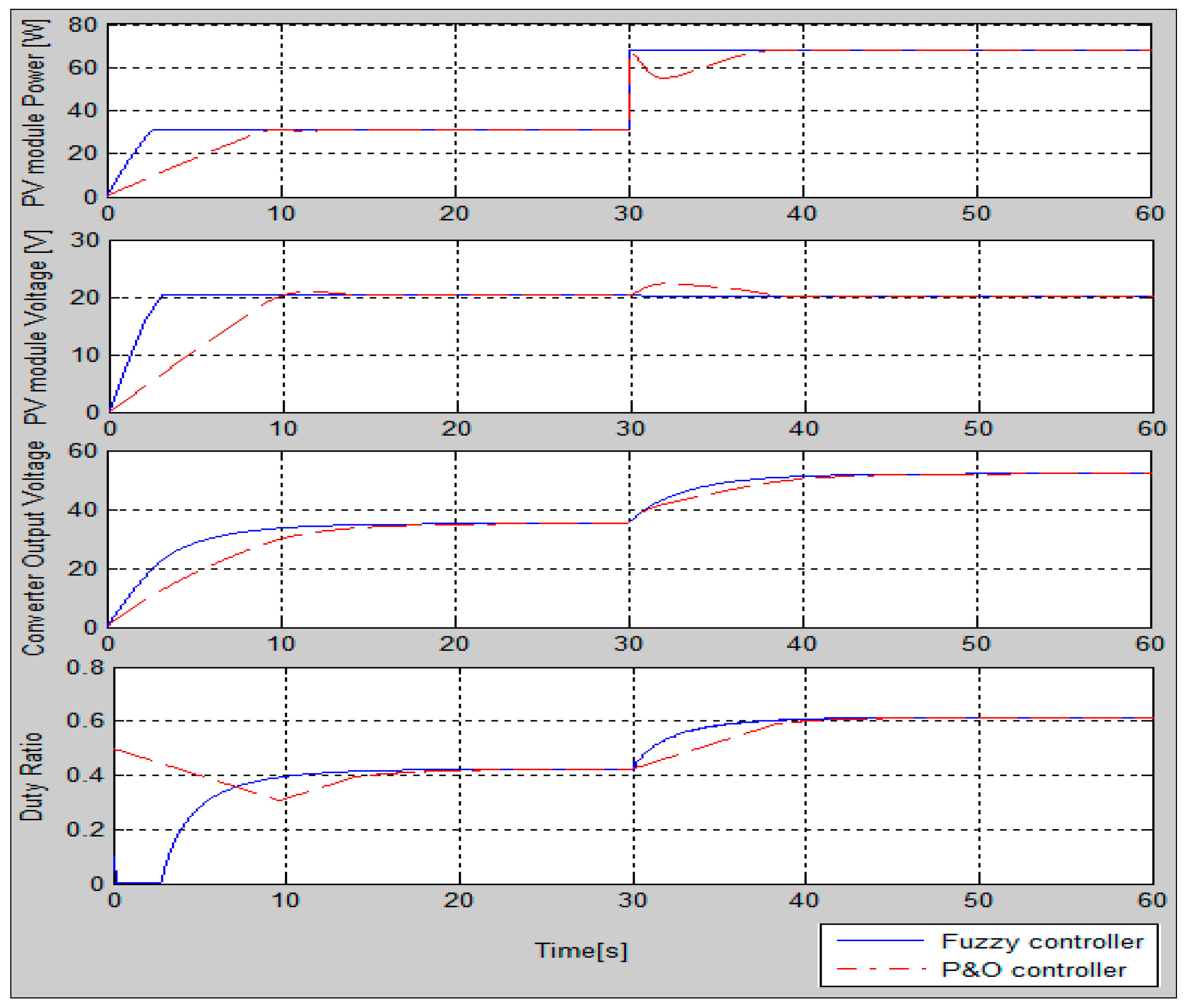
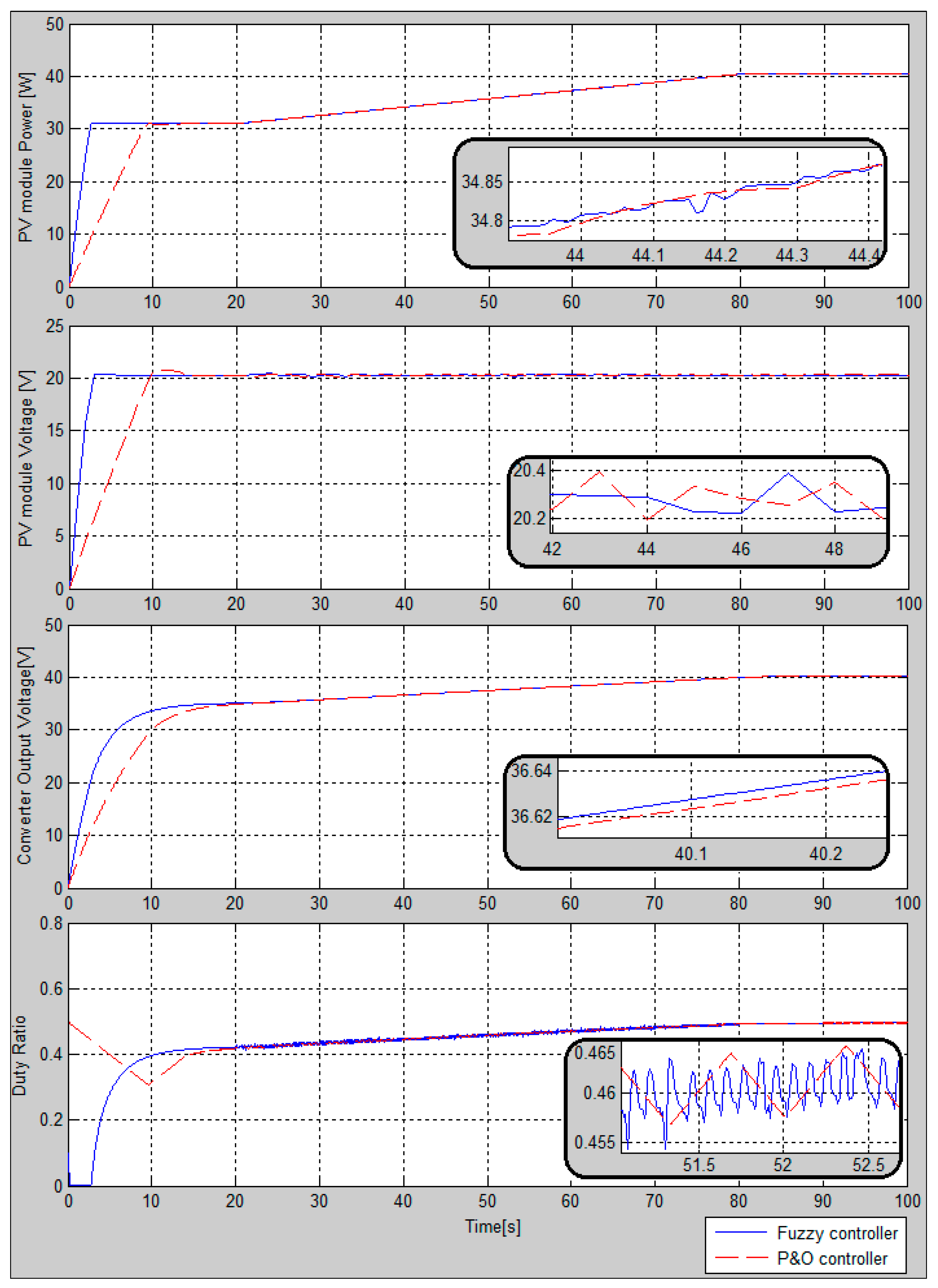
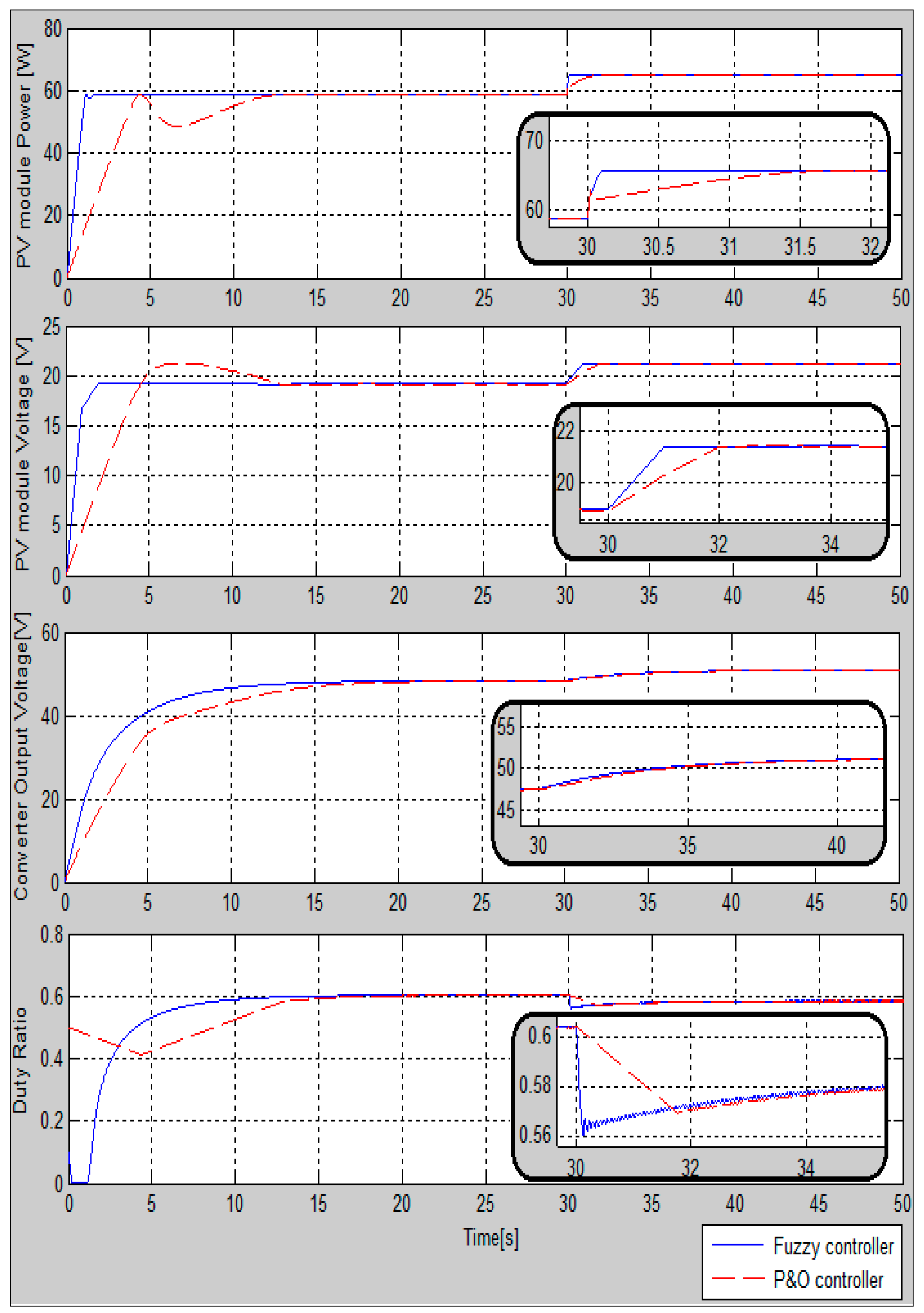
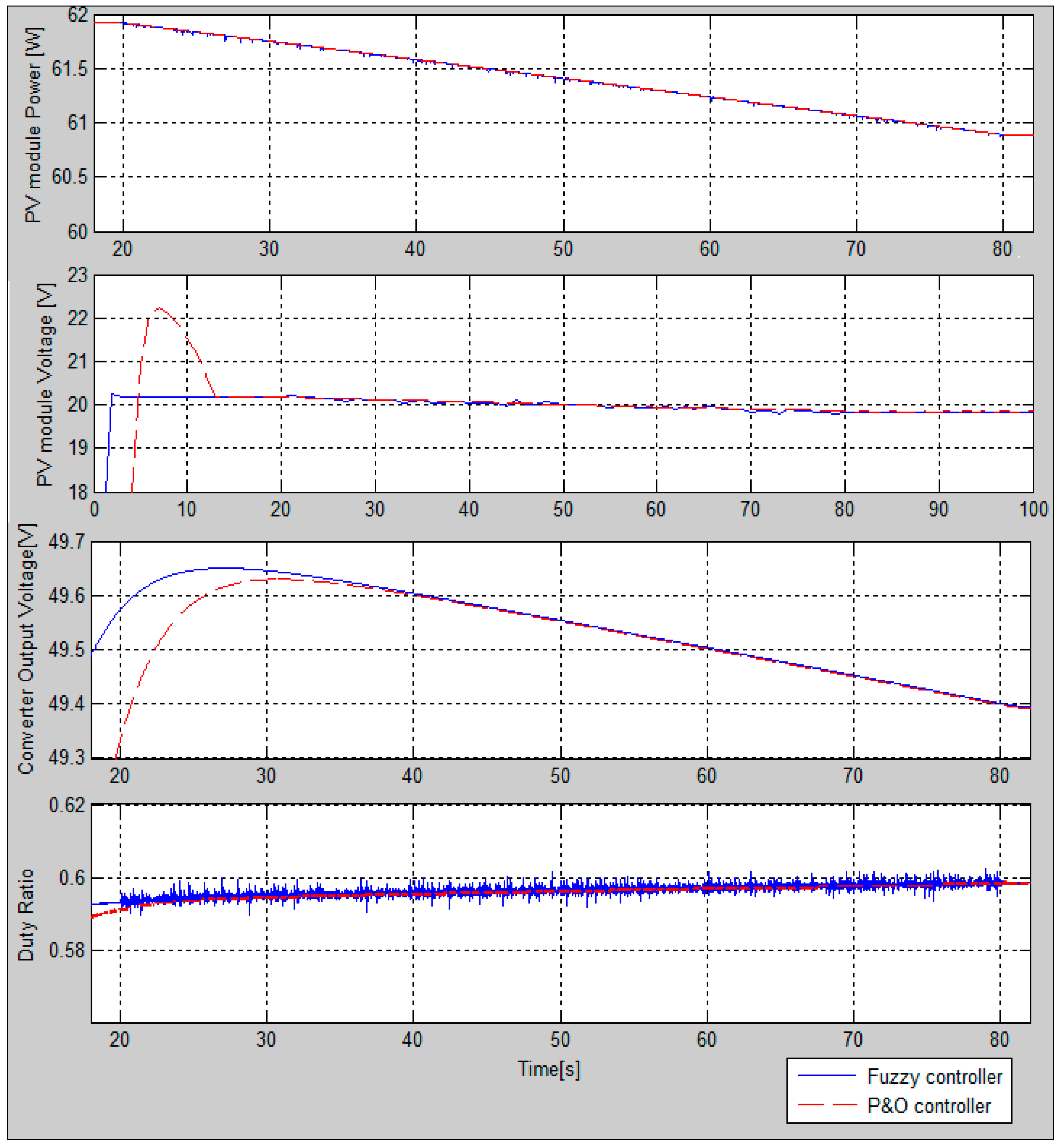
| MPPT Algorithms | Perturb & Observe | Incremental Conductance | Fractional Open-Circuit Voltage | Fractional Short-Circuit Current | Fuzzy Logic Control | Neural Network | Particle Swarm Optimization |
|---|---|---|---|---|---|---|---|
| Convergence speed | Varies | Varies | Medium | Medium | Fast | Fast | Fast |
| Implementation complexity | Low | Medium | Low | Medium | High | High | Medium |
| True MPPT | Yes | Yes | No | No | Yes | Yes | Yes |
| Sensed parameters | Voltage Current | Voltage Current | Voltage | Current | Varies | Varies | Varies |
| Efficiency (%) | Medium | Medium | Low | Low | Very high | Very high | high |
| Cost | Moderate | Moderate | Cheap | Cheap | Expensive | Expensive | Expensive |
| Stability | Not stable | Stable | Not stable | Not stable | Very stable | Very stable | Very stable |
© 2018 by the authors. Licensee MDPI, Basel, Switzerland. This article is an open access article distributed under the terms and conditions of the Creative Commons Attribution (CC BY) license (http://creativecommons.org/licenses/by/4.0/).
Share and Cite
Tchoketch Kebir, G.F.; Larbes, C.; Ilinca, A.; Obeidi, T.; Tchoketch Kebir, S. Study of the Intelligent Behavior of a Maximum Photovoltaic Energy Tracking Fuzzy Controller. Energies 2018, 11, 3263. https://doi.org/10.3390/en11123263
Tchoketch Kebir GF, Larbes C, Ilinca A, Obeidi T, Tchoketch Kebir S. Study of the Intelligent Behavior of a Maximum Photovoltaic Energy Tracking Fuzzy Controller. Energies. 2018; 11(12):3263. https://doi.org/10.3390/en11123263
Chicago/Turabian StyleTchoketch Kebir, Gul Filiz, Cherif Larbes, Adrian Ilinca, Thameur Obeidi, and Selma Tchoketch Kebir. 2018. "Study of the Intelligent Behavior of a Maximum Photovoltaic Energy Tracking Fuzzy Controller" Energies 11, no. 12: 3263. https://doi.org/10.3390/en11123263
APA StyleTchoketch Kebir, G. F., Larbes, C., Ilinca, A., Obeidi, T., & Tchoketch Kebir, S. (2018). Study of the Intelligent Behavior of a Maximum Photovoltaic Energy Tracking Fuzzy Controller. Energies, 11(12), 3263. https://doi.org/10.3390/en11123263






